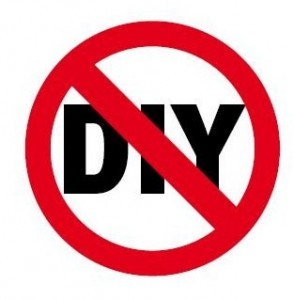L&M Agrees with the AAO: Beware of Do It Yourself Orthodontics

Lately, there has been a lot of press about do-it-yourself (DIY) orthodontics. For those of you that don’t know, DIY orthodontics is a movement promoting the idea that people should straighten their own teeth at home, using everyday items such as rubber bands or paper clips to achieve the result. Initially, the majority of this took place overseas, but many articles and YouTube videos from here in the US can be found nowadays proclaiming the ease and low cost of treating your own crooked teeth. The low cost, short times, and relative ease these processes present seem almost too good to be true. Unfortunately, for many people that have proceeded to treat themselves without the help of a trained dental professional, what sounds too good to be true really is just that, too good to be true.

In January, the American Association of Orthodontists released a consumer alert detailing the risks involved with DIY orthodontics. This release can be seen in its entirety here.
Personally, I can see the draw of these DIY methods, and how they could appear to be the best option available. Most people come into our office focused on a very specific problem, such as “one crooked tooth,” or “the small gap between the front teeth.” Using a rubber band for a couple of days or an at home aligner kit that is advertised to take only a few months would be very appealing to anyone. However, using these products and methods can (and repeatedly have) caused acute and/or long term issues to the user’s teeth and surrounding tissues in the mouth.
This potential for possibly irreparable damage through unsupervised orthodontic treatment is the main reason why fixing your smile is best left to a professional trained in orthodontics. A quick Google search will provide multiple examples of the gum disease, bone loss, and lost teeth that result from people trying to treat themselves orthodontically. Orthodontists have had extensive training in order to understand and avoid these issues, while guiding a patient to the best and most stable result possible.
Before beginning orthodontic treatment, it is important to have a thorough oral examination and treatment plan devised for an optimal result. Every case is unique, and therefore a “one size fits all,” way of thinking is obviously not the best way to go. Underlying issues that may need to be taken care of before starting tooth movement can be missed without proper orthodontic records and treatment planning. Moving teeth in the presence of undiagnosed oral health problems can result in irreparable damage, including permanent tooth loss, oral pain, and jaw issues. Additionally, when aligned correctly, teeth fit together in a specific orientation that results in a healthy oral environment. Without proper guidance, teeth often end in a traumatic occlusal relationship in which one or more teeth can be chipped, damaged, or even lost.
Now, as a trained orthodontic professional, I am obviously biased toward seeing the orthodontist if you are looking to improve your smile. But as all dental professionals, I have also taken the Hippocratic Oath, in which a medical professional pledges to cause no harm to their patient and the public. This is why I felt the need to promote the AAO’s warning against these DIY methods. Self-treatment is a serious danger, and can have serious consequences. At the very least, consult a trained professional first, and learn the risks involved.




